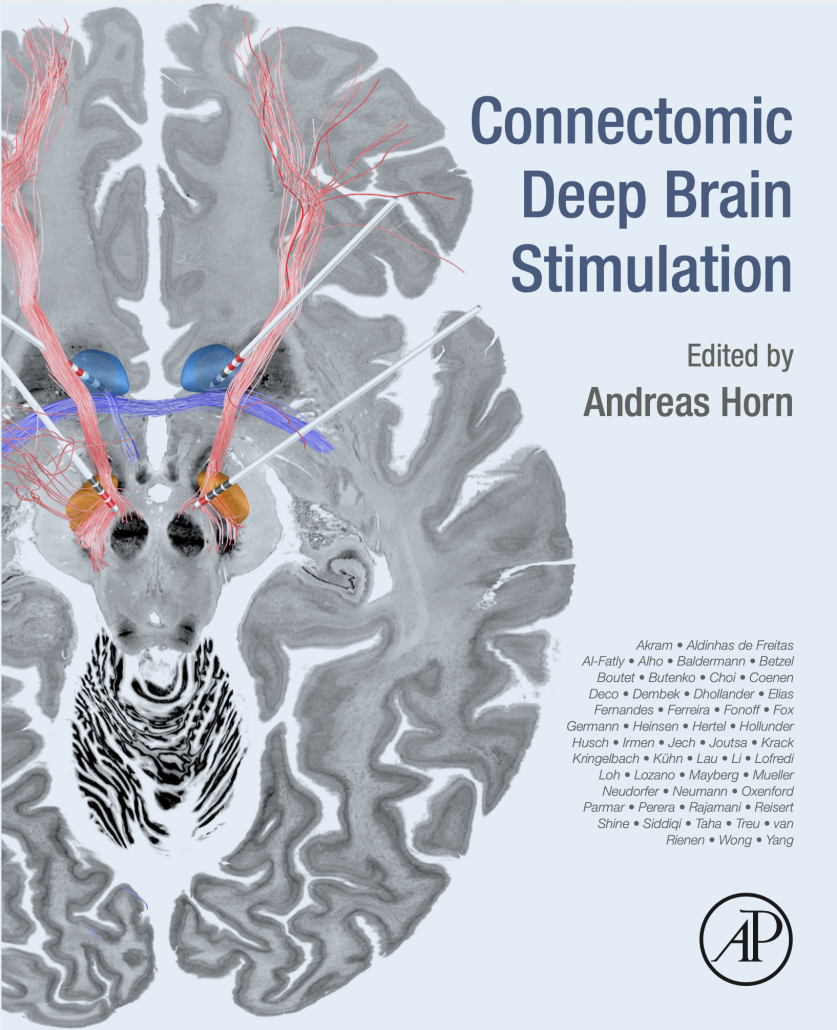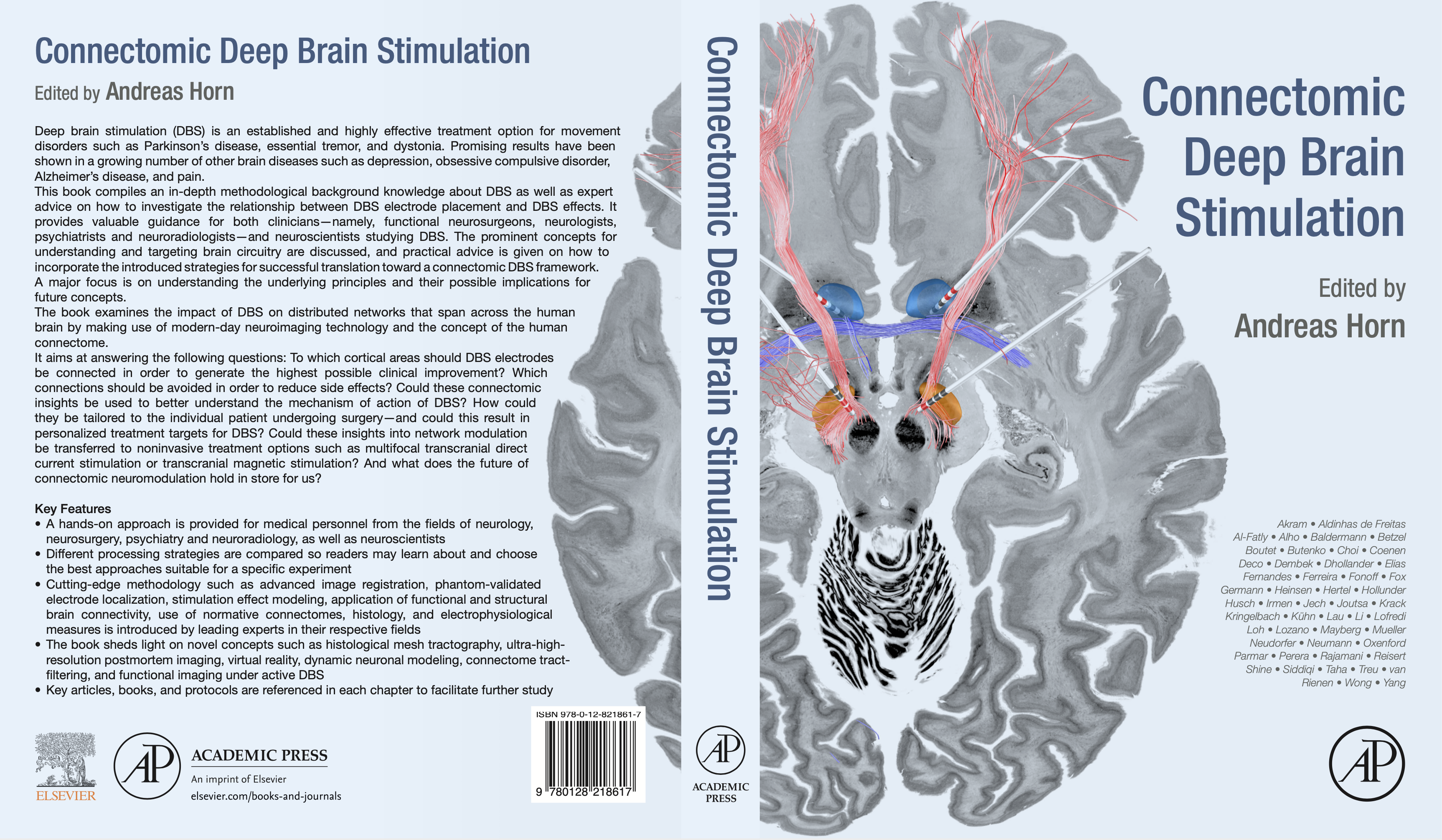Connectomic Deep Brain Stimulation Book available now!
We are excited that our book on connectomic deep brain stimulation can now be ordered from the publisher (Academic Press) and/or Amazon etc.
After a foreword by Andrea Kühn & Michael Fox, chapters were written by internationally renowned experts for specific topics covering broad content from electrode localization methods, DBS modeling and connectomics. For instance, we were excited to have pioneers from the connectomics field (James M Shine & Rick Betzel) write chapters about functional MRI and the connectomic revolution and diffusion MRI / tractography experts (Thijs Dhollander & Marco Reisert) contribute to the book, as well.
The team around Andreas Husch & Frank Hertel are likely the world experts on electrode localizations and covered this topic, while few people in the world may have thought as much about sweetspot mapping as Till Dembek – who wrote the chapter on this topic. An integrative review about the mechanism of action of DBS was written by Wolf-Julian Neumann developing exciting concepts that bridge micro- to macroscales and static models with dynamical ones.
While most of the book focuses on neuroimaging methods, we are thrilled that Roxanne Lofredi & Andrea Kühn contributed a chapter on how to use electrophysiological methods to enhance our understanding about connectomic neuromodulation. In a similar fashion, Eduardo Alho, Erich Fonoff & Helmut Heinsen contributed a chapter on how to enhance network models using different sources of information, such as histological and postmortem datasets. Thushara Perrera, Jonathan Lau & Svenja Treu wrote chapters about image preprocessing, stereotactic spaces and DBS group level analyses. Konstantin Butenko & Ursula van Rienen wrote a comprehensive chapter that systematically analyzes effects of assumptions made in VTA and pathway activation modeling based on their recent open source contribution to the field, OSS-DBS.
Moving to the clinical side of connectomic DBS, the Toronto team (Gavin Elias, Jurgen Germann, Aaron Loh, Alexandre Boutet, Alaa Taha, Emily Wong, Roohie Parmar & Andres M Lozano) wrote a chapter about normative connectomes, Karsten Mueller & Robert Jech on their pioneering efforts to use fMRI under active DBS.
World experts Francisca Ferreira & Harith Akram (Movement Disorders); Ki Sueng Choi & Helen Mayberg (Depression) and Juan Carlos Baldermann (OCD) contributed chapters about how connectomic DBS has informed studies in these clinical fields.
Volker A Coenen & Marco Reisert wrote a chapter on how connectomics may inform surgical planning and Friederike Irmen, Paul Krack & Andrea Kühn on how connectomic DBS concepts may inform cognitive neuroscience.
We conclude the book with a chapter on how brain lesion network mapping may inform neuromodulation targets (Juho Joutsa & Michael Fox) and how inversely connectomic DBS studies could inform noninvasive neuromodulation targets (Shan Siddiqi & Michael Fox).
Two outlook chapters develop concepts toward personalizing connectomic DBS studies (Nanditha Rajamani, Andreas Horn & Barbara Hollunder) and how to integrate dynamical models into the framework (Henrique Fernandes, Gustavo Deco & Morten Kringelbach)





